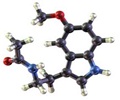Sleep disorder and ear, nose and throat specialists at Thomas Jefferson University are examining an innovative procedure to treat obstructive sleep apnea syndrome.
Sleep disorder and ear, nose and throat specialists at Thomas Jefferson University are examining an innovative procedure to treat obstructive sleep apnea syndrome.
In the procedure, known as Genial Bone Advancement Trephine (GBAT), a small portion of the lower jaw which attaches to the tongue is moved forward, to pull the tongue away from the back of the airway, increasing the airway space. It is considered an option for patients when medications or a continuous positive airway pressure (C-PAP) device, which increases the supply of oxygen and reduces the work of breathing, have proven to be ineffective.“Even immediately after the procedure patients have an easier time breathing,” noted Maurits Boon, M.D., Clinical Instructor in Otolaryngology-Head and Neck Surgery, Jefferson Medical College of Thomas Jefferson University. “We have also observed that in a select group of patients hypertension drops off.”
This procedure is often employed as an adjunct to more conventional surgery and can be very effective at treating OSA (obstructive sleep apnea).
Sleep apnea is a breathing disorder characterized by brief interruptions of breathing during sleep. Obstructive sleep apnea occurs when there is collapse of upper airway structures that prevent normal airflow. This essentially, results in cessation of breathing with resultant decreases in oxygen in the blood stream. The consequence is that this pattern of breathing causes interruptions in the normal sleep cycle and makes it difficult to get a restful night of sleep.
“Sleep apnea is a serious, potentially life-threatening condition that is far more common than generally understood, noted Karl Doghramji, M.D., director of Jefferson University Hospital’s Sleep Disorders Center, which recently opened a new all-inclusive facility in Center City.
“Sleep apnea occurs in all age groups and both genders,” said Dr. Doghramji, Professor of Psychiatry and Human Behavior, Jefferson “It is more common in men, although it may be under-diagnosed in women. It is estimated that as many as 12 million Americans have sleep apnea.”
Advertisement
· irregular heartbeat
· high blood pressure
· heart attack
· stroke
Advertisement
In this procedure, the surgeon is able to go through the inside of the mouth, avoiding the need to make any external incisions and avoiding any cosmetic changes. The procedure is usually done in conjunction with an uvulopalatopharyngoplasty-- surgery used to remove excess tissue at the back of the throat (tonsils, uvula, and part of the soft palate).
The piece of bone along with the attachment for the tongue is pulled forward and down, then fastened to the outside of the lower jaw. A small titanium plate is used to affix the bone.
The patient may experience soreness but will not have any change in dental occlusion (the way the teeth fit together), said Dr. Boon. The recovery period is usually about two weeks.
Three to six months after the procedure, follow-up sleep tests are performed.
Source-Eurekalert
SRM/C











